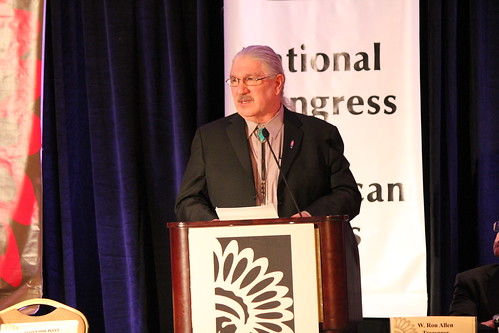As part of President Obama’s commitment to honoring Government-to-Government relationships with Tribal Nations, the federal government is continuing to strengthen its relationships in Indian Country. The Departments of Agriculture (USDA), Defense, Interior, and Energy joined the Advisory Council for Historic Preservation and released an action plan to implement the Memorandum of Understanding (MOU) regarding interagency coordination and collaboration for the protection of Indian Sacred Sites.
Last week during the National Congress of American Indian’s (NCAI) Executive Council Winter Session, USDA Deputy Undersecretary, Arthur “Butch” Blazer, announced that he will help lead USDA’s efforts for the implementation of the MOU. Due to his expertise Blazer is the ideal choice to lead the USDA component of the Action Plan. Prior to his position at USDA, Blazer served as the New Mexico State Forester where he was the first Native American to hold that position. During his tenure as State Forester, he was also named as Chair of the Council of Western State Foresters and Co-Chair for the Western Forestry Leadership Coalition. A member of the Mescalero Apache Tribe, he was also his tribe’s lead forestry official and has been intimately involved in Tribal issues throughout his life.
During his speech to NCAI, Deputy Undersecretary Blazer said, “To meet the needs of American Indians and Alaska Natives regarding the places they hold sacred, this takes us one more step toward recognizing Tribal values as an essential part of contemporary American values.”
The agreement, signed at the White House Tribal Nations Conference in 2012, will be in effect for five years, with the Department of Interior serving as the Chair. To accomplish the work outlined in the MOU, the above mentioned “participating agencies” first will review applicable authorities to determine their potential relevance to sacred sites. They will then determine if additional inter-agency measures may be warranted to protect sacred sites better. The Action Plan lays out how the Departments will work together to achieve the 11 action items in the MOU.

Secretary Vilsack reaffirmed his commitment to Sacred Sites as seen through the recently released report calling for USDA and the U.S. Forest Service to work more closely with tribal governments in the protection, respectful interpretation and appropriate access to Indian sacred sites. The report is a culmination of more than 100 meetings with tribal members and agency employee surveys. The Forest Service is working closely with the working group during the implementation phase of both the report and the agreement. In the spirit of interagency coordination and collaboration the Forest Service is sharing what they learned during the extensive two year collaboration and consultation process with Indian Country.
For further information on the MOU and Action Plan please visit the Forest Service Interagency Coordination and Collaboration for the Protection of Indian Sacred Sites.
